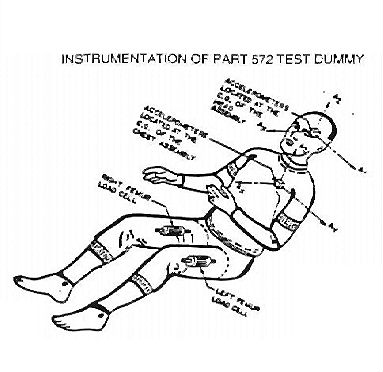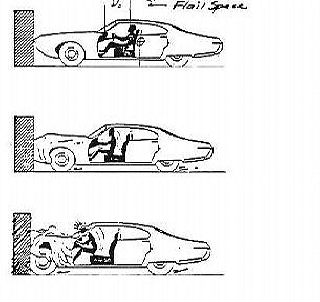
Fig. 1 (from Speed and the Motor Vehicle)

Fig. 2 (from Speed and the Motor Vehicle)
The immediate cause of injury or death in traffic accidents are numerous, such as broken glass, fires, the crushing of the vehicle, hurling the passenger against the car itself. But the main one is the acceleration a passenger experiences.
In a collision there is a very large change in velocity in a very short period of time ( a = v / t) , hence there is an enormous acceleration( or deceleration if you like) that produces a large force on the object, from F = m a .
Through experiments, its been found that we can handle an acceleration of 20 g (20 x 9.8m/s2 ) without injury. Published safety standards say that we can tolerate accelerations up to 80 g. But the key is to remember that this must be for a very short period of time.
There is something called a Severity Index, which takes into account both the magnitude of acceleration and the length of time during which it is experienced
S.I. = ((alpha)^5/2) t , where alpha is the acceleration in g, and t is the time of exposure in seconds.
What the Severity Index is intended to do is to give an idea of the chance a passenger has of survival in a collision. A proposed specification is S.I. < = 1000 for the human head.
Some rough estimations of SI in everyday life :
-SI for a person falling back on a chair ~ 1
-throwing a baseball fairly hard (40 km/hr) against a wall ~10 000
-hammer hitting a nail in wood ~ 3 000
-hammer hitting a concrete wall ~ 3 600 000
-driving into a concrete wall at 90 km/hr w/ no seat belt ~ 24 000
Presently, the main consideration when designing a car, is the passengers inside. The modern automobile is designed to allow the belted passenger to hit a solid barrier at 50 km/hr and survive. Some of the things engineers do to achieve this is:
-by implementing a crush zone in the front and the rear of the automobile, and a survival cage for the occupants.
-prevent the engine block from coming back onto the passengers
-try to get the steering column to collapse rather than force the steering wheel back against the driver.
--besides this, there are also Motor vehicle Safety Standards set by the Federal Government. For example, in a collision at 50 km/hr, car doors should not open, the hood latch must hold, the front windshield must stay in place, and nothing should intrude into the passenger compartment.
--Another important thing is for the front of car to be free of protrusions and unyielding materials(to minimize the injury to a pedestrian)
59% of injury producing accidents are front end collisions. Therefore there is a major effort in designing front end of automobiles so that they will crumple in a way that results in a uniform acceleration over a relatively long distance, in order to keep the forces on the passenger low.

Fig. 1 (from Speed and the Motor Vehicle)

Fig. 2 (from Speed and the Motor Vehicle)
By using test dummies in recorded crashes, automobile designers are able to get an idea of what values of acceleration are survivable and therefore, they can design accordingly. As well, they can test the effectiveness of different seat belts and air bags.
The crush zone at the front of the vehicle is designed to fold up and redirect forces in a controlled fashion in order to limit the deceleration experienced by the occupants.
In a collision at 50 km/hr , the average deceleration over the whole car is about 15 g (147 m/s2), and there is a maximum in any 2/100th of a second in the crash of 90 g.